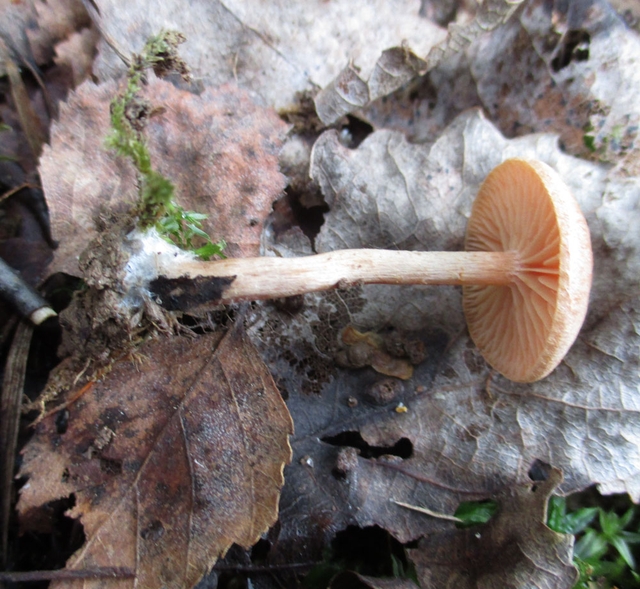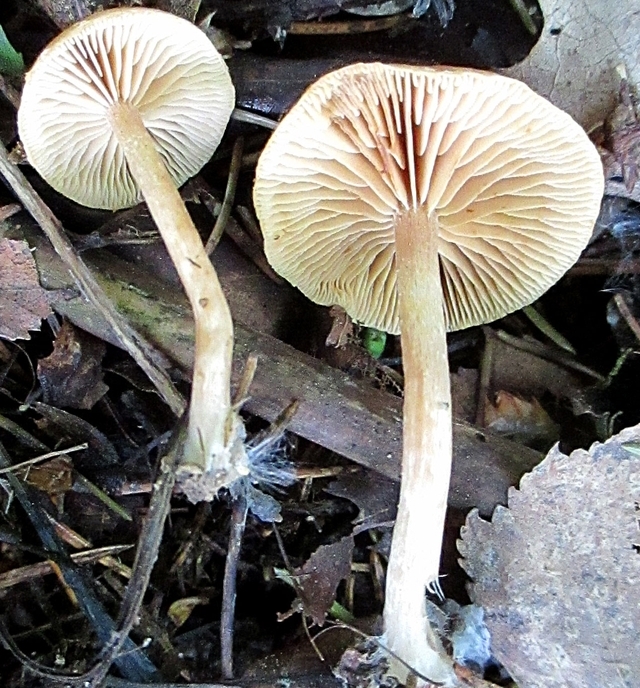Content
Sprinkled Science (Alnicola or Naucoria subconspersa) is a lamellar mushroom of the Hymenogastric family. Does not represent nutritional value, the species is not included in any of the four categories, inedible. It grows throughout the territory of a temperate climate, forms a few groups.
What sprinkled science looks like
Sprinkled science forms a small fruiting body of light brown color. It received its specific name because of the rough surface of the cap, it is covered with small scales.
The color of the fruiting body can be lighter or darker depending on the place where it grows.
Description of the hat
The sprinkled science is rather small, the diameter of the cap rarely exceeds 5 cm.The shape depends on the stage of development:
- at the initial stage, the cap is rounded, convex;
- at an older age - prostrate, with concave edges;
- the colors are not monochromatic, the central part is colored darker, and the edges are lighter;
- the surface is hygrophane, the places of attachment of the plates are determined;
- at the beginning of growth it has a veil, the remnants are visible along the edge in the form of uneven and torn fragments, by the time of adulthood the veil disappears completely.
The plates are large, long and short, rarely located. The color of the lower part of the cap is light beige, does not differ from the color of the surface. The border between the peduncle and the lamellar layer is clear. The pulp is yellow or light brown, brittle, thin, very watery.
Leg description
The leg of the sprinkled science is thin, cylindrical, grows up to 5 cm.
The structure is fibrous, hygrophane, hollow. The surface is light yellow or beige, covered with small scales in the form of a plaque. On the lower part, the presence of mycelium is clearly defined, which forms a white seal.
Where and how it grows
Science is growing, sprinkled in the European and central parts of Russia, colonies are found in the Moscow region, the Leningrad region. It is rare in the southern regions. It grows in small groups on rotten leaves or sandy ground. A prerequisite for growth is high soil moisture. The main congestion is on wetlands in the shade or partial shade. The species is common in all types of forests, often found near aspen or alder, less often located near willow or coniferous trees. Fruiting - from mid-summer to the first frost.
Is the mushroom edible or not
Sprinkled science does not belong to any category in terms of nutritional value. No toxicity information available. Fruit bodies with thin, tasteless and watery flesh, unattractive. The appearance of the mushroom raises doubts about its edibility; it is better not to collect such forest fruits.
Doubles and their differences
Similar in appearance to the sprinkled science of sprinkled tubary branched.
Very small, bright brown, the diameter of the cap is 2-3 cm. It grows singly or in several pieces, does not form colonies. Located on woody debris. Fruiting - from spring to autumn. The fungus is of no interest due to its small size and thin fragile fruiting body. Refers to inedible.
Galerina sphagnum is a similar mushroom, it is classified as inedible.It has no nutritional value, but there are poisonous representatives in the family, so it is not worth collecting sphagnum gallerina.
The double differs in the shape of the cap, it is more sloping and rounded, with an oily surface, and the science of science has a small-scaled protective film. The cap is small in relation to the leg, the latter is elongated and long.
Marsh gallerina is a lamellar, small, inedible mushroom. The chemical composition of the fruiting body contains toxic compounds that pose a threat to human life.
Outwardly, it is very similar to sprinkled science. Differs in smaller size, long stem and the presence of a conical bulge in the center of the cap. Grows on mosses of wetlands, acidic soils. Fruiting - from June to September.
Conclusion
Sprinkled science - a small mushroom with a watery transparent fruiting body. Grows in small groups in mixed forests, on a moss bed or in sandy soil. Fruiting from June to October, has no nutritional value.














